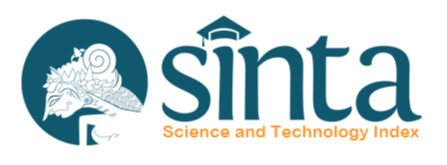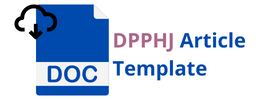Spatial Distribution of Dengue Hemorrhagic Fever (DHF) Casesin Sragen
DOI:
https://doi.org/10.12928/dpphj.v15i1.2178Keywords:
Dengue Hemorrhagic Fever (DHF), spatial distribution, DHF endemicity, Geographic Information Systems (GIS)Abstract
Background: Dengue Hemorrhagic Fever (DHF) had still become a health problem that often occurred and not least caused death for Indonesia especially in Sragen, Central Java. Distribution of DHF cases in an area could be described using Spatial analysis with Geographic Information Systems (GIS). Objective: This study aimed to provide spatial distribution of Dengue Hemorrhagic Fever cases and regional endemicity of DHF in Sragen during 2016-2018 using Geographic Information Systems. Method: Descriptive research design with Cross-Sectional approach using GIS was used to get the description of spatial distribution of dengue and the region endemicity of dengue in Sragen. The sample used was Saturated Sample which was secondary data about the incidence of DHF from District Health Office of Sragen from 2016 to 2018 totaling 1,349 cases. The subjects consisted of geographical areas which consisted of 20 subdistricts with DHF case. The collected data were analyzed descriptively by displaying a frequency distribution table and description of spatial distribution using Geographic Information System. Results: The results showed that the spatial distribution of DHF was spread randomly in all districts in Sragen. The average incidence rate (IR) of DHF during the last 3 years in Sragen was > 50 / 100,000 population. Spatial description showed that 58 villages out of 208 villages in Sragen were DFH endemic areas and generally all subdistricts in Sragen were endemic areas of DHF. Conclusion: Spatial description of DHF in Sragen showed that all subdistricts in Sragen were endemic areas for DHF.
References
2. Syamsir S, Pangestuty DM. Autocorrelation of Spatial Based Dengue Hemorrhagic Fever Cases in Air Putih Area, Samarinda City. J Kesehat Lingkung. 2020;12(2):78-86.
3. Kementerian Kesehatan RI. Situasi Penyakit Demam Berdarah Dengue di Indonesia Tahun 2017. Infodatin. Jakata: Pusat Data dan Informasi Kemenkes RI; 2018.
4. Setyawan DA. Study Epidemiologi Dengan Pendekatan Analisis Spasial Temporal Pada Kejadian Demam Berdarah Dengue (DBD) di Kecamatan Masaran Kabupaten Sragen Tahun 2016-2018. Interes J Ilmu Kesehat. 2019;8(2):189–196.
5. Jateng DKP. Profil Kesehatan Provinsi Jawa Tengah Tahun 2018. Semarang: Dinas Kesehatan Propinsi Jawa tengah; 2019.
6. Hamer D, Lichtveld M. Spatial Distribution of Epidemiological Cases of Dengue Fever in Suriname, 2001–2012. West Indian Med J. 2015;64(4):344–350.
7. Prasetyo A, Rohmatun N. Implementasi Sistem Informasi Geografis dan Data Center untuk Pemetaan Penyebaran Penyakit Demam Berdarah di Kabupaten Ponorogo. Multitek Indones. 2015;9(1):9–10.
8. BPS Kabupaten Sragen. Kabupaten Sragen Dalam Angka 2018. Sragen, Jawa Tengah: BPS Kabupaten Sragen; 2019.
9. Direktorat Jenderal PP & PL Kementerian Kesehatan RI. Modul Pengendalian Demam Berdarah Dengue. Darmawali Handoko, Endang Burni Prasetyowati SH, editor. Jakarta; 2011. 27 p.
10. Zambrano LI, Rodriguez E, Espinoza-Salvado IA, Fuentes-Barahona IC, Lyra de Oliveira T, Luciano da Veiga G, et al. Spatial distribution of dengue in Honduras during 2016-2019 using a geographic information systems (GIS)–Dengue epidemic implications for public health and travel medicine. Travel Med Infect Dis. 2019;32:101517.
11. Handayani S, Fannya P, Rosa SH, Inge Angelia. Analisis Spasial Temporal Hubungan Kepadatan Penduduk Dan Ketinggian Tempat Dengan Kejadian DBD Kota Padang. J Kesehat Med Saintika. 2017;8(1):25–34.
12. Karyanti MR, Hadinegoro SR. Perubahan Epidemiologi Demam Berdarah Dengue Di Indonesia. Sari Pediatr. 2016;10(6):424-432.
13. Kaunang WPJ, Ottay RI. Pemetaan Penyebaran Penyakit Demam Berdarah Dengue Dengan Geographic Information System Di Minahasa Selatan. J Kedokt Komunitas dan Trop. 2015;3(2):90-98.
14. Pongsilurang CM, Sapulete MR, Kaunang WPJ. Pemetaan Kasus Demam Berdarah Dengue Di Kota Manado. J Kedokt Komunitas dan Trop. 2015;3(2):66-72.
15. Hii YL, Zaki RA, Aghamohammadi N, Rocklöv J. Research on Climate and Dengue in Malaysia: A Systematic Review. Curr Environ Heal Reports. 2016;3(1):81–90.
16. Akter R, Hu W, Naish S, Banu S, Tong S. Joint effects of climate variability and socioecological factors on dengue transmission: epidemiological evidence. Trop Med Int Heal. 2017;22(6):656–669.
17. Parulian Manalu HS, Munif A. Pengetahuan dan Perilaku Masyarakat dalam Pencegahan Demam Berdarah Dengue di Provinsi Jawa Barat dan Kalimantan Barat. ASPIRATOR - J Vector-borne Dis Stud. 2016;8(2):69–76.
18. Anggraini A. Pengaruh kondisi sanitasi lingkungan dan perilaku 3M plus terhadap kejadian demam berdarah dengue di Kecamatan Purwoharjo Kabupaten Banyuwangi. J Pendidik Geogr. 2016;3(3):321–328.
19. Sahrir N, Ishak H, Maidin A. Pemetaan karakteristik lingkungan dan densitas nyamuk Aedes aegypti berdasarkan status endemisitas DBD di Kecamatan Kolaka. JST Kesehat. 2016;6(1):70–75.
20. Khairiati L, Fakhriadi R. Analisis Perbedaan Faktor Risiko Kejadian Demam Berdarah Dengue Antara Daerah Endemis Dan Daerah Sporadis. J Berk Kesehatan. 2019;5(1):28-34.
21. Wowor R. Pengaruh Kesehatan Lingkungan terhadap Perubahan Epidemiologi Demam Berdarah di Indonesia. J e-Clinic (eCl). 2017;5(2):105-113.
22. Melangi M, Koto AG, Taslim I. Analisis Spasio-Temporal Kejadian Demam Berdarah Dengue (DBD) di Kabupaten Gorontalo (Spatio-Temporal Analysis of Dengue Health Fever (DBD) In Gorontalo District). J SAINS Inf Geogr. 2018;1(1):17-31.
23. Tahun KY, Choiruni A, Kusnanto H, Ilmu P, et al. Pola Spasial Temporal Demam Berdarah Dengue (DBD) Di Kecamatan Tegalrejo. J of Inform Syst for Pub Heal. 2019;4(1):80-84.
Downloads
Published
Issue
Section
License
Authors transfer the copyright and grant the Disease Prevention and Public Health Journal right of first publication with the work simultaneously licensed under a Creative Commons Attribution License (CC BY-SA 4.0) that allows others to share (copy and redistribute the material in any medium or format) and adapt (remix, transform, and build upon the material) the work for any purpose, even commercially with an acknowledgement of the work's authorship and initial publication in Disease Prevention and Public Health Journal. Authors are able to enter into separate, additional contractual arrangements for the non-exclusive distribution of the journal's published version of the work (e.g., post it to an institutional repository or publish it in a book), with an acknowledgement of its initial publication in Disease Prevention and Public Health Journal. Authors are permitted and encouraged to post their work online (e.g., in institutional repositories or on their website) prior to and during the submission process, as it can lead to productive exchanges, as well as earlier and greater citation of published work (See The Effect of Open Access).

This work is licensed under a Creative Commons Attribution-ShareAlike 4.0 International License.







